1967 Rolls-Royce Silver Shadow
Unloved for decades, the Rolls-Royce Silver Shadow is now back in fashion – and with good reason, argues Mark Dixon.
OUT OF THE SHADOWS
Photography Sam Chick
After decades in the doldrums The Best Car In The World is on the ascent again
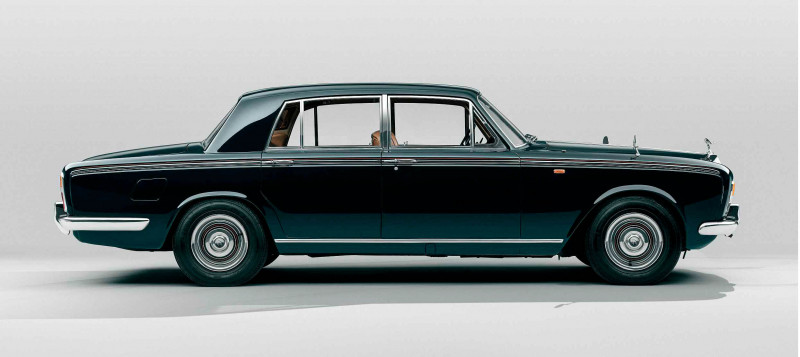
There’s a definite ‘back to the ’70s’ vibe in the UK at the moment. Paul McCartney has just headlined at Glastonbury, Kate Bush has been topping the charts, rampant inflation is sparking industrial unrest, fuel prices are at record levels – and the Rolls-Royce Silver Shadow is a cool car again. How come? In the 1970s, a Shadow was the car to aspire to. It would almost be easier to compile a list of celebrities who didn’t own one than to name those who did. In particular, if you were a working-class kid made good, the Shadow was the ultimate sign of success: everyone from Jimmy Tarbuck (with his registration COM 1C) to, yes, Paul McCartney had one. The class-busting symbolism was perhaps less significant across The Pond but the Shadow was equally revered over there, with mega-famous owners including Johnny Cash, Dean Martin and Frank Sinatra. Even counterculture types such as Andy Warhol couldn’t resist the lure of owning The Best Car in the World.
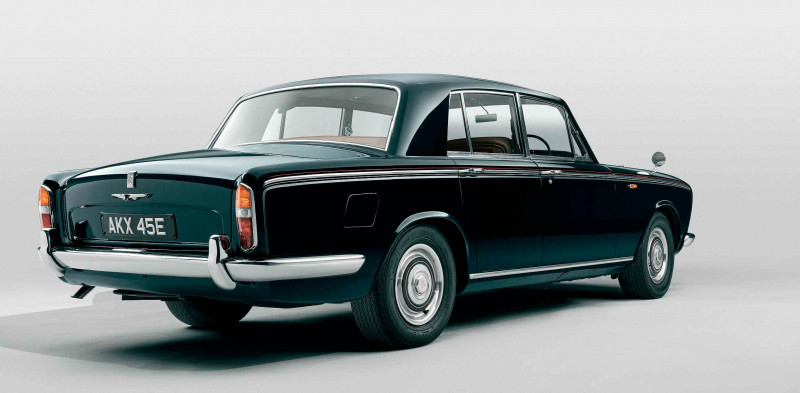
That was then, however. Time passed and the conservative-looking Shadow had started to look dated in the thrusting, greed-is-good world of the late ’80s. It didn’t help that Rolls-Royce built so many of the damned things: more than 38,000 if you include the badge-engineered Bentley variants. And, it has to be said, the Shadow’s glamour started to fade in parallel with the reputations of their once-popular owners. Jimmy Savile had a Shadow. Enough said.
‘CONDITION IS EVERYTHING, PLUS OF COURSE SERVICE HISTORY, BUT COLOUR IS LESS IMPORTANT THAN IT USED TO BE’ RAY HILLIER
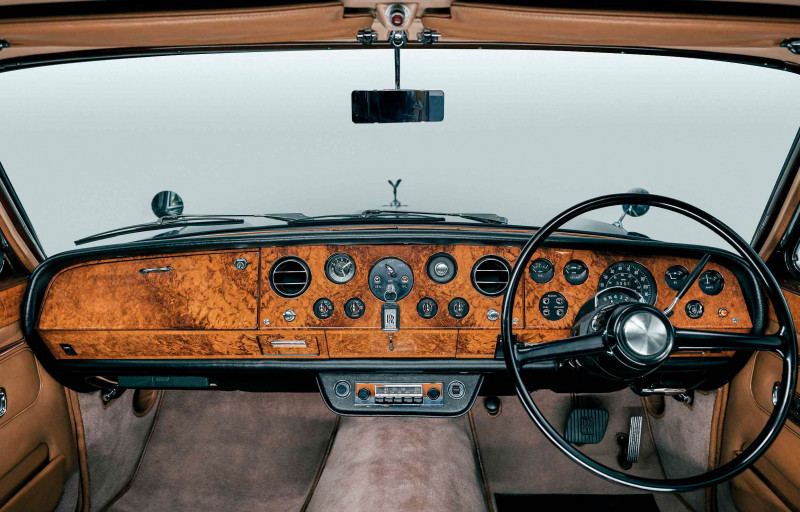
Which is all terribly unfair, because the Silver Shadow is a truly exceptional car. Just ask Octane contributor Harry Metcalfe, whose proverbial dream garage of exotic motors also includes a 1970 Shadow. Harry drove his Shadow to the Arctic Circle for a feature in Octane 181 and subsequently wrote: ‘The trip was one of the most memorable ones I’ve done and the Shadow has become a firm favourite in the garage as a result, despite being surrounded by a gaggle of supercars… I’ve ended up using it more than I intended, even taking it into central London, which revealed it to be a supremely relaxing way to travel in town.
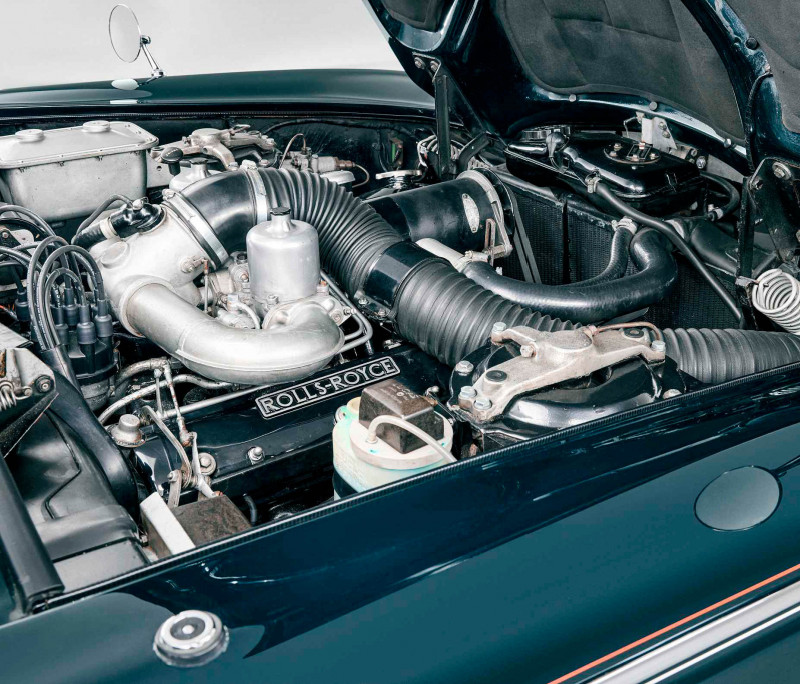
Those last few words sum up the appeal of a Shadow today. It is the ultimate feel-good classic, and much more suited to modern traffic conditions than you might expect. Let’s explore the reasons why.
‘WHY ARE THEY SO DURABLE? THE OBVIOUS ANSWER IS BECAUSE THEY WERE BUILT TO ROLLS-ROYCE STANDARDS’
When Rolls-Royce announced the Silver Shadow in 1965, there were some who considered it ‘not a proper Rolls-Royce’. The car looked completely different from the ’Royces of old: instead of being curvaceous (radiator grille aside), it had a three-box, slab-sided modernity, and – very significantly – it was smaller in every dimension than the Silver Cloud it replaced: 4¼in lower, 6¾in shorter and 3¼in narrower.
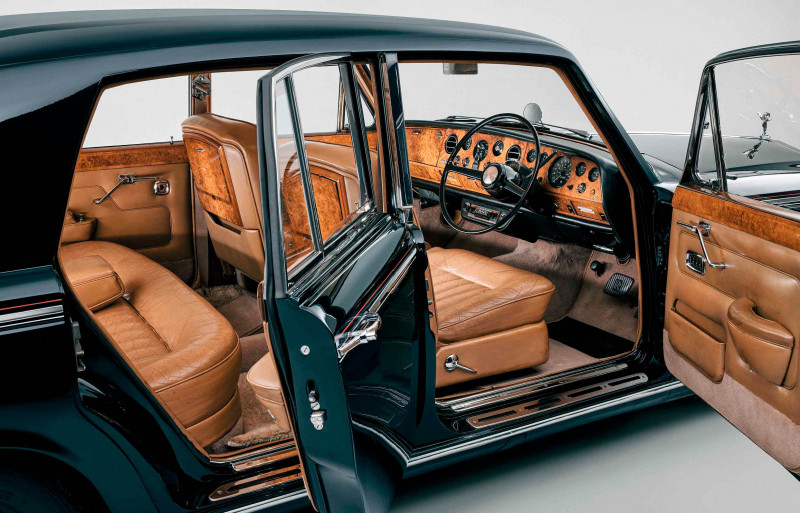
Just think about that for a moment. When was the last time you heard of a car manufacturer bringing out a prestige model that was considerably smaller than its predecessor? But Rolls-Royce knew then what today’s automakers have forgotten: that more and more people driving cars means less space on the roads, which ought to necessitate smaller vehicles. Car ownership was increasing exponentially during the 1950s and ’60s, and the Shadow was Rolls-Royce’s response at a time when its customers were becoming owner-drivers rather than chauffeured passengers.
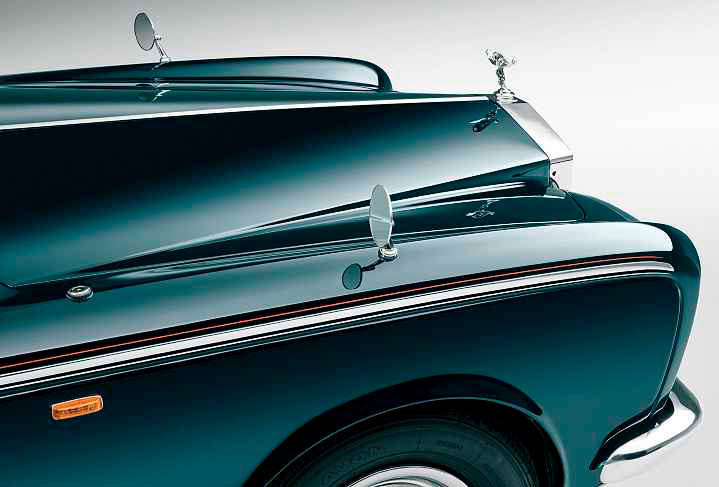
That didn’t mean any sacrifice in interior space. In the early ’60s, during a short-lived liaison between Rolls and BMC (the latter bought-in the former’s F-60 straight-six for its Vanden Plas Princess), Rolls-Royce evaluated a new BMC 1100 and found its cabin was just as roomy as a Silver Cloud’s! The Silver Shadow offered more space inside than a Cloud, thanks to monocoque construction that allowed a lower floorpan as well as a lower roofline. It was still a large car in its day but the supersized dimensions of 2022’s vehicles mean that a mass-market, mid-range family saloon will likely be longer and wider, if not necessarily taller. Styled in-house by Crewe’s design team, led by John Blatchley, the production Shadow evolved from a series of slightly ungainly prototypes into a deceptively simple and elegant form. The car featured here, a very early example that was ordered on 15 December 1965, shows this to perfection.
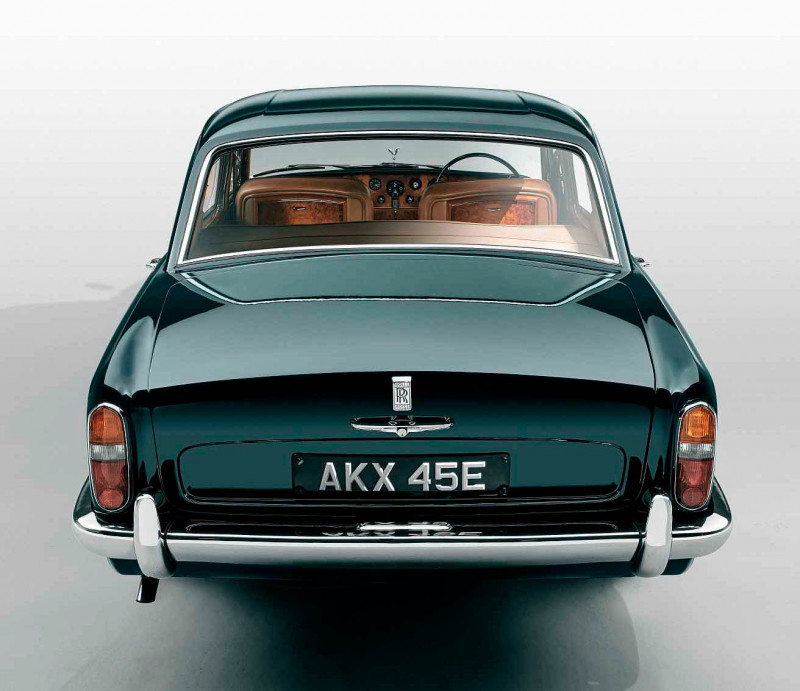
First owned by the then-Earl Spencer – grandfather to Lady Diana – it features red-and-white coachlines in which the red was specifically matched to the colour of the jerkins worn by his carriage drivers… Which helps explain why the Shadow wasn’t delivered until 18 February 1967; the current owner, Mike Martin, has around 60 A4 pages of factory build records just for this one.
Mike bought the car on 19 September 1979 and it has covered 191,000 miles. Already the reasons for the Shadow’s resurgence as a car to own and drive are becoming self-evident: it’s not particularly large, and if it’s looked-after it will be incredibly reliable. The specialist who has looked after Mike’s car for 40 years, Ray Hillier of Hillier Hill in Olney, Bucks, also has a customer with a 1971 Bentley convertible that has covered 300,000 miles.
Why are they such durable machines? The obvious answer is that they were built to Rolls-Royce standards. After delivery from Pressed Steel in Cowley, the bodyshells were subjected to two days of inspection and fettling, before being sprayed with 15 coats of paint. Interiors were trimmed in Connolly leather and burr walnut veneers, while electric windows, power seats and even a remote fuel filler release were all standard. This was heady stuff in 1965 but it was also a nod to the all-important US market, where such gadgets were commonplace on relatively ordinary cars. There was nothing revolutionary about the drivetrain – which in itself helps explain the model’s proven durability.
The basic engine was the 6230cc V8 first used in the Silver Cloud and Bentley S2; it was designed in-house to a conventional specification, with overhead valves actuated by short pushrods from a single camshaft mounted in the vee. Carburation was by two SU HD8s. By American standards, it was not particularly special, but it was exceptionally well put-together.
Even Rolls-Royce bowed to US expertise for the Shadow’s automatic gearbox, however, which was a GM400 (four-speed on early cars, changed to three-speed in 1968). It was one of the toughest features of the car; garagiste and rally driver Bill Bengry, who drove a near-stock Shadow on the 1970 London to Mexico World Cup Rally, ended up using it to slow the car repeatedly when the brake fluid kept boiling on steep mountain passes.
The combined braking and suspension system was, in fact, the most radical feature of the Shadow. Both employed high-pressure hydraulics – up to 2500psi – based on components built at Crewe under licence from Citroën, although the suspension operated in quite a different manner. Rather than being entirely hydraulically suspended, like a Citroën DS, the Shadow had coil springs all round, with hydraulic self-levelling assistance. This meant that the springs could be kept soft to give a good ride, but the selflevellers would come into operation when passengers or luggage were carried, or the fuel tank refilled. It turned out that the front self-levellers weren’t really necessary and they were deleted in 1969.
Suspension front and rear was mounted on subframes, insulated from the bodyshell by cylindrical wire-mesh Vibrashock mounts rather than the more usual rubber pads. They may have been reminiscent of Brillo pan-scourers but the density of the mesh acted like miniature variable-rate springs to give unparallelled isolation from road-induced noise and vibration. Incidentally, Shadows built for the UK and Europe had slightly firmer suspension than those sent to the USA, and there was a special heavy-duty option for countries with less-developed roads. Presumably without any sense of Swinging Sixties irony, this was referred to as the ‘Colonial’ specification.
Enough technical stuff. What is a Silver Shadow like to drive? Let’s take Harry Metcalfe’s Shadow for a spin; it’s by no means a concours car – he bought it on eBay five years ago for just £4100, and spent £2500 on sorting it out – but Harry likes his cars to be ‘right’ and so it’s a good ’un. Close the driver’s door behind you and you’re ensconced in a surprisingly cocoon-like cabin that engenders an instant sense of wellbeing. Being a 1970 example, it doesn’t have the ‘Chippendale’ dashboard of the earliest Shadows, such as Mike Martin’s, and safety crash-pads encroach top and bottom, but it’s more classic than the compromised design of the Shadow II, where a bank of rectangular warning lights sits slightly incongruously with the circular dials and ignition panel.
Turn the delicate little ignition key and the engine fires immediately, making its presence felt more than you’d expect. Harry’s is one of the last cars to be fitted with the original ‘6¼’ engine, before it was enlarged to 6.75 litres in 1970 to cope with forthcoming US emissions legislation, and he reckons it’s actually punchier than the bigger one. Certainly, it provides what Crewe would describe as ‘adequate’ take-off from the line, the automatic gearbox slurring almost imperceptibly between changes.
By far the most striking characteristic is the steering. Apart from recent Bilstein dampers, this car is as it left the factory and it has the recirculating ball system that was superseded by rack-and-pinion for the Shadow II. It is very power-assisted and has no ‘feel’ whatsoever… and yet, somehow, that doesn’t seem to matter. It’s surprisingly precise and, because you must use the gentlest of hands to guide the car with that big, thin-rimmed wheel, it positively obliges you to adopt a relaxed approach. An aggressive driving style just won’t work; instead, sit back, breathe slowly and minimise your inputs. You’ll find you can cover ground pretty quickly with a total absence of stress.
On the move, the engine becomes almost inaudible, and you can literally hear the ticking of the electric clock, plus the occasional tiny squeak of leather (Ray Hillier says that cars fitted with the rarer Parkertex velvet are notably silent). The ride is exemplary – even though Harry’s car is still wearing the Bridgestone winter tyres that were fitted for his Arctic adventure. Their relatively stiff sidewalls may account for a slightly compromised secondary ride – the response to minor road imperfections that you tend to notice more at lower speed – but there’s no doubt that the Shadow is one of the all-time great ‘wafters’.
Tyre choice is important, of course. Originally, crossply tyres were specified because of their greater sidewall compliance, but radials are now almost universally adopted. Dougal Cawley, proprietor of vintage and classic tyre supplier Longstone Tyres, himself drives a late Shadow I (see Man & Machine) and says: ‘If you’re a passenger, you may prefer Avons, but for the driver it has to be Michelins. The Avon is all about ride comfort and the Michelin gives just a little more directional stability and makes the car handle better, although Shadows were never renowned for their sharp handling.’
That said, it’s possible to improve the handling greatly by fitting an aftermarket kit, the most famous of which is made by Harvey Bailey Engineering. Developed several decades back by suspension guru Rhoddy Harvey-Bailey – the car pictured here had one fitted 30 years ago – it consists of uprated springs and anti-roll bars and was endorsed by no less a driver than the late Tony Dron, who installed it on his own Shadow. Other kits have more recently become available from specialists such as IntroCar, a package that has particularly impressed Ray Hillier of Hillier Hill.
Rolls-Royce may at times not have been the most forward-thinking of manufacturers – the Shadow was its first model to feature disc brakes, for example – but it was very good at constantly improving a design over time. At launch in 1965, the Shadow was produced as a four-door saloon, and also as the Bentley T, the bonnet of which was subtly reshaped in order to match its curvier and lower-profile radiator grille.
In 1966, two-door body styles were added. Most of these were by Mulliner Park Ward, with an attractive and sportier Coke-bottle treatment of the flanks, but there was also a small run of two-door cars by James Young, which looked much more like the regular saloon.
In 1967 came a convertible version of the Mulliner two-door, and this and the hardtop equivalent were re-launched as the Corniche in 1971, with a raft of changes that included the new 6750cc V8, a more modern facia and a smaller three-spoke steering wheel.
That year turned out to be a particularly miserable one for Rolls-Royce, when a crisis in its aero engine division drove the whole company into receivership; fortunately, the planned launch of the Corniche went ahead and is credited with restoring a lot of confidence to buyers and suppliers. Appropriately, journalists were flown to the South of France to test it; such apparent profligacy made more sense when the car division’s managing director pointed out that the whole event cost less than half the retail price of a single Corniche (about £12,800).
As the ’70s progressed, the Shadow and its siblings were always evolving – faster-acting steering, better ventilation, impact-absorbing bumpers – but by far the biggest changes came in 1977, when the Shadow II and Bentley T2 were launched. US-style deep, rubber-faced bumpers and a ‘bib’ front spoiler were the most obvious external mods while, under the skin, rack-and-pinion steering improved the handling significantly. The air-conditioning system was said to have the cooling effect of 30 domestic fridges, while the heater was powerful enough to warm a three-bedroom house! Which, when you consider that a Shadow II cost 25% more than the average UK house in 1977, seems highly appropriate.
Shadow II and Bentley T2 production continued until 1980, when both were displaced by the all-new Silver Spirit and Mulsanne, respectively, but the Corniche convertible enjoyed a phenomenal swansong, soldiering on until 1995 (all Corniches were rebranded as Continentals from 1985). It had no directly comparable rivals by that time and was particularly popular in California, which accounted for a full quarter of total sales. Remember Robert Wagner and Stephanie Powers in TV’s Hart to Hart? The series ran from 1975 to ’84, and the Harts owned a dark green Corniche convertible, still the ultimate status symbol for ‘a self-made millionaire’ who was also ‘quite a guy’.
We shouldn’t forget the long-wheelbase Shadow, either, a relatively rare model introduced in the late ’60s and given its own identity as the Silver Wraith II in 1977. And we definitely can’t forget the Shadow’s most outrageous variant, the Camargue, based on the Shadow platform but with Pininfarina styling apparently inspired by Lady Penelope’s ‘FAB 1’ from Thunderbirds and with an equally out-of-this-world price tag. At launch in 1975, it was the most expensive production car you could buy. Talking of which…
‘What’s it worth, mister?’ It’s not very long ago that you could pick up a decent Shadow for £10,000 – but, then, that seems true of so many classics. The reality now is that you’ll have to double that figure for anything in good shape, and you could easily spend twice or more again for a really nice one. Mike Martin’s ex-Earl Spencer Shadow is insured for £55,000, the ‘Lady Di’ family connection probably accounting for about 15-20% of that valuation.
Ray Hillier, who, with Tony Hill, co-founded Hillier Hill in 1985 and originally trained as a Rolls-Royce service apprentice in the 1970s, agrees that the Shadow and its siblings are no longer cheap classics. ‘A top-notch one is worth £40-000-50,000 now and a nice original and usable car is probably mid-to-high 20s. Condition is everything, plus of course service history. Colour is slightly less important than it used to be. Certain colours – dark green, for example – will always be popular, but the ’70s browns that were once reviled are now back in fashion.’ Bentleys generally command a premium, because fewer of them were built and many people prefer their more understated look. Ray predicts that any two-door Bentley is likely to prove a sound investment. ‘They’re rarer than some Astons, and right-hand-drive convertibles particularly so. I think values are going to fly.’
When it comes to choosing between early or late cars, whether Rolls or Bentley, it really is horses for courses: the first-generation cars are arguably more elegant, while the later models have better handling and are more evolved. The parts situation for all models is generally very good, thanks to specialists such as Flying Spares and IntroCar, and there are good-quality repair sections available for common rust spots such as wheelarches. Your biggest potential bill could be for repairs to the high-pressure hydraulics and, if you want to have the many seals changed for peace of mind, a full service costs around £3000 plus VAT.
Discounting the rarer coachbuilt models, you still don’t need to spend a huge amount to own a Silver Shadow or T-Series, one of the finest saloon cars ever built. They are not perfect but – as Harry Metcalfe, Dougal Cawley and Mike Martin can attest – they are the sort of cars with which, to use the modern cliché, you ‘make memories’. And, while high fuel consumption has always been their Achilles’ heel – road-testers typically returned 11-12mpg – you may well feel that it’s a price worth paying.
There is one tantalising alternative. The idea of converting a classic car to electric power is anathema to many, but a Shadow might be the exception to the rule. Its V8 petrol engine is not the car’s defining feature; replacing it with an electric motor is not such a heretical suggestion.
Think about it: near-silent operation, better weight distribution (so less understeer), and of course today’s all-important green credentials. The Rolls-Royce Silver Shadow is a superb town car already – but how much better could an electric version be. For enthusiasts like us, an electric Shadow really could be The Best Car in the World. End
THANKS TO the car owners and to Ray Hillier, hillierhill.co.uk.
Above An early Shadow interior is simply exquisite, and pre-1970 examples are prized for their so-called ‘Chippendale’ burr-walnut veneered dashboards; US safety legislation then dictated a change to a shallower design with padded top and bottom rolls.
Left As is usual in car design, the original iteration of the Silver Shadow was the purest and it remains an outstandingly elegant car, 57 years later.
TECHNICAL DATA 1967 Rolls-Royce Silver Shadow
- Engine 6230cc V8, OHV, two SU HD8 carburettors
- Max Power c200bhp @ 4900rpm (never officially stated)
- Max Torque c289lb ft @ 3200rpm
- Transmission Four-speed automatic, rear-wheel drive
- Steering Power-assisted recirculating ball
- Suspension Front and rear: double wishbones, coil springs, telescopic dampers, self-levelling hydraulic assistance
- Brakes Discs
- Weight 2116kg
- Top speed 118mph
- 0-60mph 10.9sec
This page Wherever you look, the quality of the details is impeccable. This car has red coachlines specifically matched to the jerkins worn by its aristocratic first owner’s carriage drivers…
The cultural touchpoints that unify every British child of the ’70s are myriad. On the telly there was Blakes 7 (Glynis Barber, say no more), the memory of your parents hurriedly covering your eyes during the sexy bits of I, Claudius and, because things weren’t quite bleak enough in real life with non-stop power cuts and non-start bin emptying, there was The Survivors to cheer everyone up of any evening.
The pop charts were full of nowdisgraced lascivious men in stacked heels, represented by now-disgraced impresarios and introduced by now-disgraced disc jockeys. Driveways were packed with Marinas, playground arguments were largely over who was the sexiest member of Pan’s People and, inexplicably, Joe Bugner was everywhere. And that is only the tip of the iceberg of the misery. Of course it wasn’t all bad: there was the summer of 1976, and most of all a Corgi 1:43 Rolls-Royce Silver Shadow in every toy box. Mine, like most of my friends’, was the far-rareron- the-road MPW two-door (in Silver Sand, I think). If any car reflected the fortunes of the decade itself, the Shadow was it. It went into 1970 as a glamorous five-year-old, the pinnacle of sophistication and class both mechanically and in status, and came out of the 1970s as the slightly tawdry wheels of choice of the more successful northern working men’s club comics. As if things couldn’t get worse, this glorious machine that once laid claim to be The Best Car In The World then had to endure years in the wilderness as the wedding car of choice.
How did everyone – except the wedding hire companies – forget the sheer magnificence of the Silver Shadow? Has there ever been a more dramatic fall from motoring grace? Which is why I am so delighted that the Shadow seems to be enjoying a long overdue rehabilitation. Because of my age, I simply can’t support all the elements of the motoring 1970s that a younger generation now deems acceptable – like russet, saffron and all the other BL euphemisms for excrement-coloured paint – but the re-gentrification of this oncearistocratic Royce (Rolls is for proles, as they used to say) is a cause I can get right behind. The number of its champions has been quietly but steadily growing under the radar, except for Harry Metcalfe whose campaign is rather more public, and prices have been rising accordingly. Good; everyone deserves a second chance.


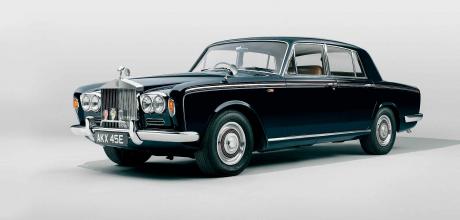
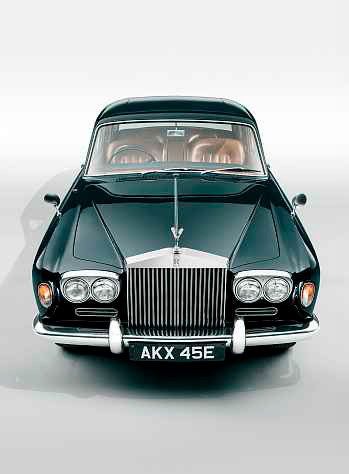









A subtler Shadow
Your feature on the Rolls-Royce Silver Shadow reminded me of my late grandfather’s Bentley T. When his building business, Siggs & Chapman in Croydon, took off, he wanted to treat himself with a Rolls-Royce but my grandma thought it too ostentatious and forbade that choice… so he bought a Bentley! The T was in fact his second Bentley, replacing an S2 Continental Flying Spur, ‘2 TPA’, and he kept it until he gave up driving many years later.
I well remember how big it seemed in the 1970s but now they look quite modest and those lines so clean and simple. Funny how cars like this, in the doldrums for years, along with the likes of the Lamborghini Espada and Ferrari 400/412, are now appreciated – and appreciating. It’s just a pity that fuel prices are so high.
Grandad was always being asked ‘What’ll she do?’ – miles per gallon, not miles per hour. He always replied ‘Eight around town and ten on a run’! The way the rear end sat down like a speedboat as he launched it down the road might have been a factor.